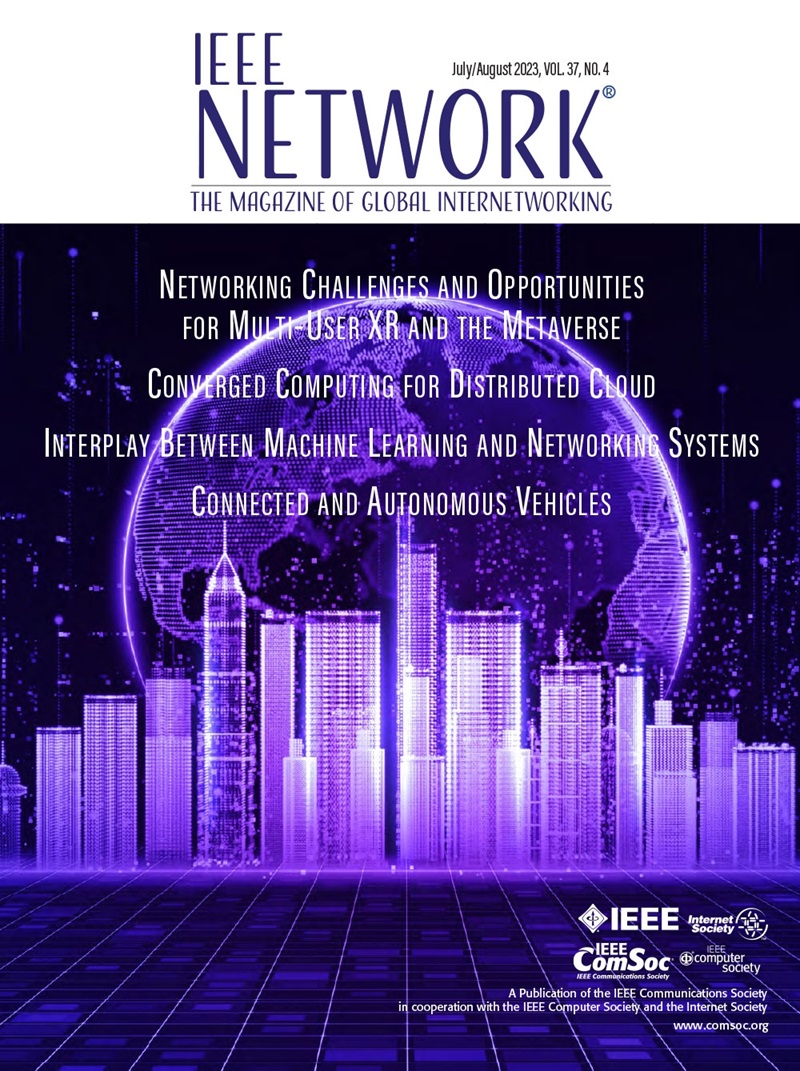Integrated Satellite-Terrestrial Networks: Architectures, Key Techniques, and Experimental Progress
IF 6.3
2区 计算机科学
Q1 COMPUTER SCIENCE, HARDWARE & ARCHITECTURE
引用次数: 2
Abstract
As a promising paradigm toward the sixth generation mobile communication, integrated satellite-terrestrial networks (ISTNs) can greatly extend network coverage and reduce the dependence on terrestrial infrastructure. Despite the charming potentials of ISTN, many challenges are still unsolved in terms of architectures, air interface protocol enhancement, mobility management, experimental validation, and so on. Therefore, in this article, we first clarify the four stages of ISTN architecture development and then discuss protocol enhancements as well as key techniques for ISTN. In addition, one of our previous experiments is reported in detail, where low Earth orbit satellite communication is used as the backbone connecting two private 5G networks that are 400 km away from each other. During the experiment, a remote immersive robot control service is realized with average end-to-end latency and uplink peak data rate being 30 ms and 50 Mb/s, respectively, which shows the feasibility of ISTN in supporting emerging industrial Internet applications. Meanwhile, other experimental progress is also presented, focusing on air interface protocol enhancement, transmission control protocol transmission, and network management. Finally, we point out future trends in ISTN, including programmable satellites and artificial-intelligence-based networking.卫星-地面综合网络:体系结构、关键技术和实验进展
星地融合网络(istn)作为第六代移动通信的发展模式,可以极大地扩展网络覆盖范围,减少对地面基础设施的依赖。尽管ISTN具有迷人的潜力,但在架构、空中接口协议增强、移动性管理、实验验证等方面仍有许多挑战尚未解决。因此,在本文中,我们首先阐明ISTN体系结构开发的四个阶段,然后讨论协议增强以及ISTN的关键技术。此外,详细报告了我们之前的一个实验,其中使用近地轨道卫星通信作为骨干连接两个相距400公里的专用5G网络。实验中实现了端到端平均时延为30 ms,上行峰值数据速率为50 Mb/s的远程沉浸式机器人控制服务,验证了ISTN在支持新兴工业互联网应用方面的可行性。同时,还介绍了其他实验进展,主要集中在空中接口协议增强、传输控制协议传输和网络管理等方面。最后,我们指出了ISTN的未来趋势,包括可编程卫星和基于人工智能的网络。
本文章由计算机程序翻译,如有差异,请以英文原文为准。
求助全文
约1分钟内获得全文
求助全文
来源期刊

IEEE Network
工程技术-电信学
CiteScore
20.40
自引率
2.20%
发文量
186
审稿时长
3 months
期刊介绍:
Published bimonthly, IEEE Network caters to the networking community by offering topics of significant interest. The journal serves as a focal point for spotlighting and discussing crucial computer communications issues and developments. The articles are designed to be surveys or tutorials with a practical emphasis, ensuring comprehension by nonspecialists and practitioners alike.
 求助内容:
求助内容: 应助结果提醒方式:
应助结果提醒方式:


